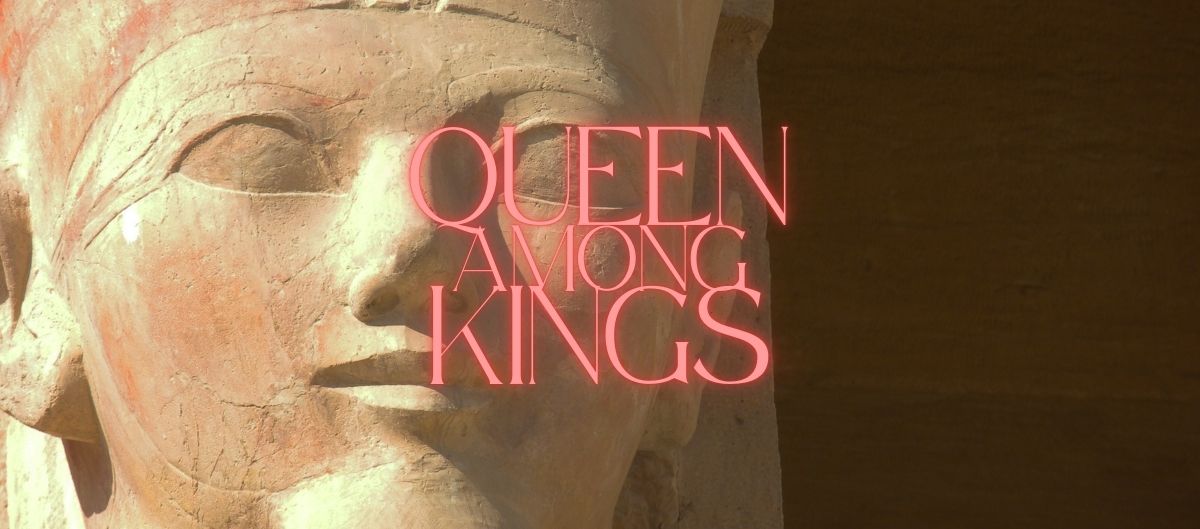Queen Hatshepsut: Woman of Mystery and Power Lies with Kings

This queen, as one of Egypt’s only female pharaohs, singularly re-wrote the rules of Egyptian royal lineage protocol with her cunning, her beauty and her unbridled ambition. She did what no other woman, even the other great legends of history here in the birthplace of civilization, Nefertari, Nefertiti, and much later Cleopatra… dared to do.
She ruled. And she ruled well.

Her legend carries to the Valley of the Kings., the burial ground that was part of the ancient city of Thebes, now Luxor, and was the burial site of most of the kings of the “golden dynasties” the 18th, 19th, and 20th from about 1539–1075 BC. From Thutmose I to Ramses X, almost one thousand years before the Great Pyramids were built.
It’s most notable attraction is the tomb of Tutankhamun, discovered in 1922, but it holds at least 63 other tombs. Excavation, however primitive, continues to this day.






One of the most well-known of the Egyptian queens buried here is Queen Nefertari (1290–1224 BC) whose final resting place is carved out of rock with polychrome reliefs in her tomb still intact.

But it was this woman, Queen Hatshepsut, whose life and legend I found the most fascinating.

A woman who ruled as a pharaoh for nearly twenty years in the fifteenth century B.C., during the early period of the New Kingdom. One among hundreds of men, across thousands of years of Egyptian history.
In order to thwart the rules of lineage, she married her half brother, Thutmose II, who inherited his father’s throne with Hatshepsut as his consort. As she had no male heir from this marriage, she assumed her husband’s power upon his death by acting as regent for his infant son from a lesser harem queen.
Within eight years she had been crowned king and adopted the full royal protocol of the pharaohs. As soon as her stepson was old enough, sent him off to defend her kingdom. Hatshepsut and Thutmose III were now co-rulers of Egypt, with Hatshepsut very much the dominant king.

Her reign was peaceful and productive as she undertook an extensive building program. In Thebes this focused on the temples of the divine god Amon-Re. At the Karnak temple complex, she remodeled her earthly father’s hypostyle hall, added a barque shrine (the Red Chapel), and introduced two pairs of obelisks.




Her supreme achievement was her Dayr al-Baḥrī temple; designed to be her funerary monument for Hatshepsut’s burial, it was dedicated to Amon-Re and included a series of chapels dedicated to the pantheon of Egyptian gods…Osiris, Re, Hathor, Anubis, and the royal ancestors.




Hatshepsut had planned to be buried in the Valley of the Kings, where she extended her father’s tomb so that the two could lie together. But it wasn’t until 1902, thousands of years after her death that her mummy was found here in the Dayr al-Bahri temple in an unmarked or mismarked tomb!

Perhaps Egypt’s greatest Queen and female leader, she lay in anonymity in the impressive grandeur of this spectacular temple.
Related Posts
Captivating Khiva: An Astonishing Life Inside the City Walls
Khiva’s roots stretch back over 2,500 years, but its golden age began in the 16th …
June 7, 2025The Quiet Magic of The Turkmen: Nomads of the Steppe
Nestled in Uzbekistan’s remote northwest, Urgench might not be the first name that jumps out …
June 7, 2025

Leave A Comment